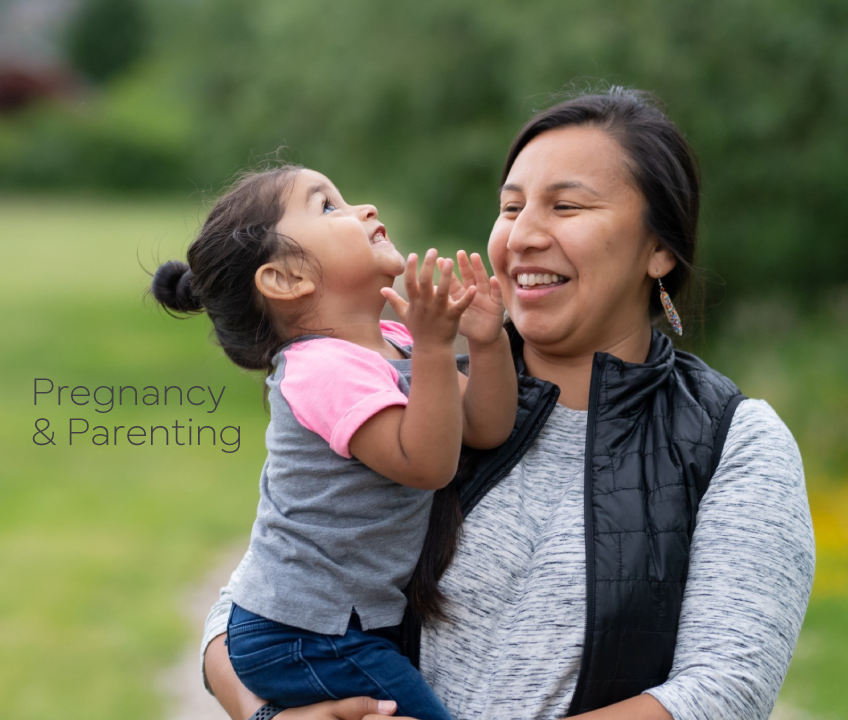Algoma Public Health
- Childhood Attachment
- Back
- Preconception Health
- Prenatal Education
- Perinatal Mental Health
- Pregnancy Checklist
- Be Active
- Addictions During Pregnancy
- Healthy Babies Healthy Children Program
- Infant Feeding
- Parenting
- Child Development
- Nutrition
- Oral Health
- Injury Prevention
- Indigenous Resources
- FAQs
- Contact Support
- Nurturing Algoma
- Pregnancy & Parenting >
- Child Development >
- Childhood Attachment >
Childhood Attachment
Creating a bond with your baby can be a special experience. You can begin when you are pregnant by talking to your growing baby. Once they are born, you can hold them skin-to-skin to create a physical bond.
If you have a partner and you both hold and touch your infant frequently, your little one will soon come to know the difference between your touches.
A secure attachment is the deep connection that babies form with their caregiver(s). Babies need to feel safe, cared for and protected, which requires physically and emotionally available caregivers. This helps meet their needs in a warm, sensitive, and consistent way.
Connecting with your baby while you are pregnant will help you prepare for their arrival. Attachment is for life, but happens mostly in the first year of your baby's life. How caregivers respond to and behave towards their babies can affect this lifelong bond.
There are many things that you and your partner can do to build a secure attachment while you are pregnant. You can:
-
You can talk, sing, and read to your baby
-
Rub your belly and talk to them at the same time
-
Take time for self care. Find activities that support you in managing stress
In a secure attachment, both you and your baby’s needs are met. This secure attachment is the first way that babies learn to sort out their feelings and their actions. It lets your baby explore the world and have a safe place to come back to. Secure attachment also helps your baby learn how to trust other people. It is an important part of developing healthy relationships for later in life.
My child and I, Attachment for life - Mon_enfant_4 (beststart.org)
Adverse childhood experiences, or ACEs, are potentially traumatic events that occur in childhood (0-17 years). For example ACEs include:
- Experiencing violence, abuse, or neglect
- Witnessing violence in the home or community
- Having a family member attempt or die by suicide
Also included are aspects of the child’s environment that can undermine their sense of safety, stability, and bonding, such as growing up in a household with:
- Substance use problems
- Mental health problems
- Instability due to parental separation or household members being in jail or prison
Please note the examples above are not a complete list of adverse experiences. Many other traumatic experiences could impact health and wellbeing.
ACEs are linked to chronic health problems, mental illness, and substance use problems in adolescence and adulthood. ACEs can also negatively impact education, job opportunities, and earning potential. However, ACEs can be prevented.
The 10 ACEs of trauma are forms of physical/emotional abuse, neglect and household dysfunction. They generally include the following:
- Physical abuse
- Sexual abuse
- Emotional abuse
- Physical neglect
- Emotional neglect
- Mental illness
- Divorce
- Substance abuse
- Violence against your mother
- Mental illness
- Having a relative who has been sent to jail or prison
It might be tempting to believe that your situation is hopeless, but it doesn’t have to be. Algoma Public Health is here to support your family to reduce the risks associated with ACEs.
The Healthy Growth and Development Program works with families to provide support, parenting information, builds confidence in parenting skills, connects families to community services, encourages attachment and healthy growth and development.
Information taken from: National Center for Injury Prevention and Control, Division of Violence Prevention
Date Created: November, 2022










